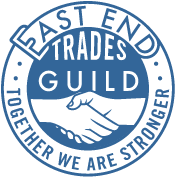…by business owner Fiona Atkins. Meeting is from 6.30 to 9 at the Bishopsgate Institute.
Introduction
The area around Spitalfields is a microcosm of the history of London: the narrow crowded streets haphazardly laid out, small businesses a stone’s throw from the giants of the City and the cultural diversity that stems from three hundred years of immigrants in search of shelter, prosperity and freedom. It is what makes this area fascinating to the large numbers of people who now come to the here from all over the world for the sense of what makes London tick: old and new, large and small, black and white. A thriving area, but one increasingly discovering the stresses inherent in popularity – everyone wants to jump on the bandwagon and the danger is that the lure of high rents and easy returns will destroy the very thing that makes this special by inviting in the global uniformity of every high street. If we lose our identity we lose the very thing that makes us a destination and ultimately the area will surely decline.
We need a strategy to prevent this and help the area move forward and to be workable and effective this will need to be based on a broad consensus of businesses large and small in partnership with commercial landowners and developers, local authorities and residents of the wider area. The East London Trades Guild can put forward a document as a starting point for this discussion, recognising that the views of all parties need to be taken into account.
Aims
To create a unique and ground breaking strategy for the local community that is based on sound business principles, taking into account that landlords, developers and smaller traders all need to make a profit and that residents need to safeguard the character and amenities of their surroundings. The strategy will also aim to act as a template for other areas in London and the many town and city centres elsewhere struggling with similar problems.
Background Information
The document that the EETG tables will have to be based on a complete understanding of the area now:-
Businesses type, size and distribution
Large landowners, developers and locations
Market locations, is the emphasis shifting and why?
New commercial development proposals , size and timescale
Potential areas of tension eg Fruit and Wool exchange
Areas that are perceived to be successful and those that are not
What do businesses value about the area, that makes them want to position themselves here
Transport and future developments eg Cross Rail
Any government proposals eg for IT/Tech hubs in the area
Who uses the area? Mainly local residents and people who work here or visitors?
What do they value about the area: shopping, history, diversity, amenity space?
Together with an understanding of what has worked or not in other areas, eg Covent Garden, Marylebone and Portobello.
Proposals
Based on the work done to achieve this understanding of the area what does the EETG decide needs to be protected and what needs to be changed?
Small businesses
Large businesses
Start ups, & opportunities for the young
Markets
Future developments
Unsuccessful street/market areas and what can be done
Amenity spaces and facilities
Action
How does the EETG go about producing the strategy document and consulting on it?
Steering committee
Advisory board and Patron to advise on draft strategy. To include planning, legal, accountant, architect, pr/marketing/management consultant
Identify useful contacts and build relationships with: –
Tower Hamlets planning, markets, highways
Local landowners, developers and big businesses
Market operators
Government local development agencies?
City Hall/Boris Johnson?
Press for promotion of the area
Funding, free services (City Hall)
Conclusion
This has been drafted purely as a starting point for discussion by the EETG to focus ideas and find a way forward to address issues identified previously by members of the EETG
